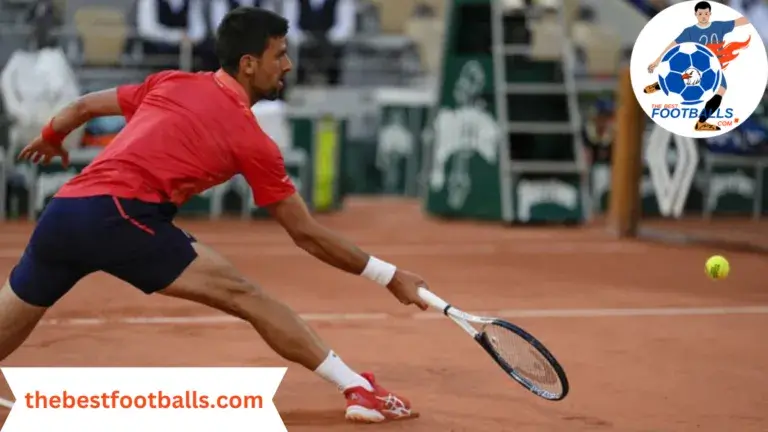Grand Slam tennis tournaments are the pinnacle of the sport, showcasing the world’s top athletes as they battle for supremacy on the court. Success in these tournaments requires a combination of physical prowess, mental resilience, and strategic insight. In this article, we delve into the strategies employed by players to secure victory in Grand Slam events.
The Mental Game: Preparing for Grand Slam Glory
Mental Resilience Under Pressure
One of the defining characteristics of Grand Slam champions is their ability to maintain mental composure in high-pressure situations. The intense spotlight of these tournaments can lead to nerves and anxiety, making mental resilience a key component of success.
Strategic Mindset and Adaptability
Champions enter Grand Slam tournaments with a clear strategic plan. However, adapting that plan based on the opponent’s performance is equally crucial. The best players meticulously analyze their opponents, identifying weaknesses to exploit while shoring up their vulnerabilities.
The Foundation of Grand Slam Success
Endurance and Stamina
The gruelling nature of Grand Slam tournaments demands exceptional physical conditioning. Matches can extend to five sets, testing players’ endurance and stamina. Fitness training, including cardiovascular exercises and intense drills, forms the cornerstone of a player’s preparation.
Explosive Power and Speed
While endurance is vital, players also require explosive power and speed to gain an edge on the court. From the serve to rapid directional changes, these explosive movements can make the difference between victory and defeat.
Playing Surface and Adaptation
Grass, Clay, Hard Courts Adjusting the Game
Grand Slam tournaments are played on various surfaces – grass, clay, and hard courts – each demanding distinct adjustments in playing style. Players who excel across surfaces showcase their adaptability and versatile skill set.
The Serve A Potent Offensive Weapon
Strategic Placement and Variability
The serve is a player’s most potent offensive weapon, capable of securing easy points or setting up advantageous rallies. Strategic placement and variability in serving speed and spin confound opponents and keep them guessing.
Rally Strategies Dictating the Game
Aggressive Baseline Play
Many modern champions employ aggressive baseline play, using powerful groundstrokes to dominate rallies. This strategy involves hitting the ball early, taking time away from opponents and forcing them into defensive positions.
Approach and Net Game
Transitioning to the net can catch opponents off guard, adding variety to a player’s strategy. Serve-and-volley or approach shots set up opportunities to finish points quickly, exploiting opponents who struggle with low balls and volleys.
Mind Games Psychological Warfare on the Court

Reading Opponents and Exploiting Weaknesses
Understanding opponents’ psychological states and exploiting their weaknesses can provide a significant advantage. Sudden changes in strategy, mixing up pace, and targeting an opponent’s known vulnerabilities all contribute to a player’s mental edge.
Injury Management and Recovery
Balancing Rest and Training
Amid a demanding Grand Slam schedule, managing injuries and recovery is paramount. Balancing rest, training, and seeking medical attention when necessary can ensure players perform at their best throughout the tournament.
The Evolution of Grand Slam Strategies
Technological Advancements in Analysis
Technological advancements have significantly shaped the landscape of tennis strategy. Advanced analytics and data tracking allow players and their coaches to delve deep into performance metrics, enabling more precise strategy development.
Video Analysis and Opponent Scouting
Video analysis has revolutionized the way players prepare for matches. Studying past games of opponents helps players identify patterns, weaknesses, and potential strategies to exploit during their games.
The Role of Coaching in Grand Slam Success
Strategic Guidance and Tactical Adjustments
Coaches are pivotal in helping players decode opponents’ strategies and develop effective game plans. They provide insights from an outsider’s perspective and help players make critical tactical adjustments mid-match.
The Mental Battle: Focus and Concentration
Visualization and Mental Rehearsal
Players commonly employ mental techniques like visualization and mental rehearsal to enhance focus and concentration. Picturing the successful execution of shots and envisioning winning scenarios contribute to a positive mindset.
Nutrition and Hydration: Fueling Performance
Optimal Nutrition Strategies
Maintaining peak physical condition requires more than training – nutrition plays a vital role. Players follow carefully curated diets, ensuring they receive the proper nutrients and energy to sustain performance throughout the rigorous tournament schedule.
Hydration and Performance
For sustaining physical and mental health, staying hydrated is essential. Performance. Dehydration can lead to decreased reaction times and cognitive function, potentially affecting a player’s ability to make split-second decisions on the court.
The Art of Recovery: Between Matches
Rest and Regeneration
The demanding nature of Grand Slam tournaments necessitates effective recovery strategies between matches. Adequate rest, stretching, and massage therapy help prevent fatigue and muscular injuries.
Legendary Rivalries: Strategies on Display

Federer-Nadal Clash of Styles
The Federer-Nadal rivalry is a prime example of contrasting playing styles. Federer’s aggressive approach against Nadal’s topspin-heavy game has led to memorable battles that showcase the importance of adapting strategies based on opponents.
Djokovic-Murray: The Defensive Duel
Djokovic and Murray’s rivalry highlights the defensive aspect of tennis. Both players excel at counterpunching and extending rallies, demonstrating the significance of patience and consistency in strategy.
Gender Dynamics in Grand Slam Strategies
Women’s Game Varied Styles
The strategies employed in women’s tennis are as diverse as in the men’s game. Female players showcase various tactical approaches, from power baseline play to all-court finesse.
Inclusivity and Diversity: A Changing Landscape
Tennis is becoming increasingly inclusive and diverse, welcoming players from various backgrounds. This shift is changing the sport’s demographics and influencing the strategies and playing styles seen on the court.
A Multifaceted Journey to Triumph
Triumphing in Grand Slam tennis tournaments is a multifaceted journey that encompasses physical preparation, mental fortitude, strategic brilliance, and adaptability. Players who master these components and decode the intricate strategies required for success etch their names into the annals of tennis history. The sport will continue to change as it progresses.
The processes leading to Grand Slam glory.



